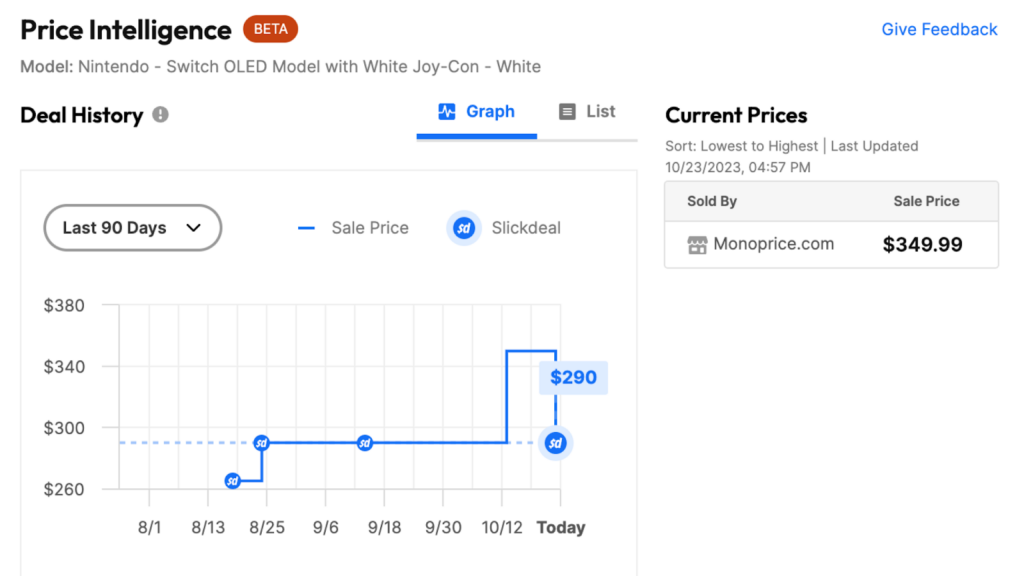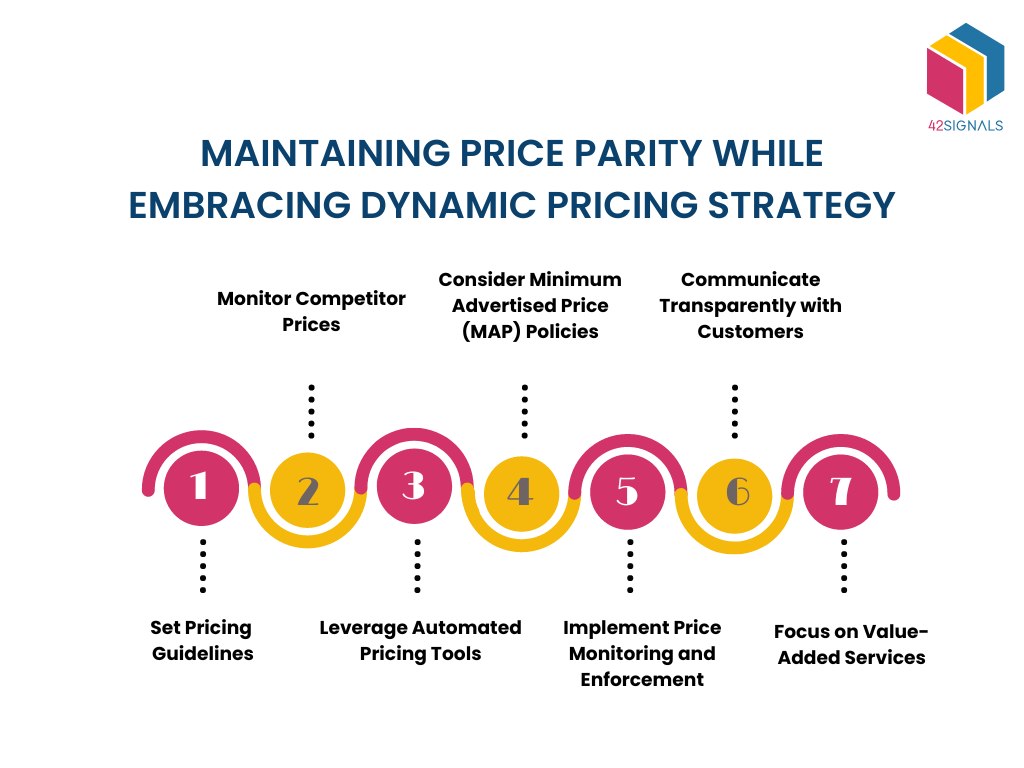On an average day, Amazon customers place an estimated 11.95 million orders, equivalent to 497,884 product orders per hour or 8,298 orders per minute. With Amazon’s dynamic pricing strategies and flash sales, a large number of shoppers have become accustomed to price discounts and more importantly, price changes.
The idea is that what isn’t on sale today will be on sale tomorrow. This means that customers have come to expect price fluctuations as the norm when they shop and the same expectation also transfers to other e-commerce websites.
Luckily, advanced technology has provided e-commerce businesses with an array of tools and strategies to streamline this process. To understand how to incorporate price changes, we’ll look at the various methods and best practices for managing price changes in your e-commerce store, emphasizing the importance of price tracking, price intelligence, and competitor price monitoring.

Why Price Change Management is Crucial for Businesses?
Price management is a critical component of any e-commerce strategy. It involves setting, adjusting, and optimizing prices to attract customers while ensuring profitability. Effective price management can lead to increased sales, improved customer satisfaction, and enhanced competitive positioning.
The Role of Price Tracking
Price tracking involves monitoring the prices of products within your store and across competitors. This practice allows you to stay informed about market trends and make informed pricing decisions. Price tracking tools automate this process, providing real-time data on price fluctuations and enabling you to respond swiftly to market changes.

Image Source: Lifehacker
Implementing Price Intelligence
Price intelligence refers to the process of gathering and analyzing data on market prices to make strategic pricing decisions. This involves understanding not just the prices themselves but the broader market context, including customer demand, competitor behavior, and overall market trends. Pricing intelligence helps businesses to:
1. Identify Pricing Opportunities
By analyzing market data, businesses can identify opportunities to increase or decrease prices to align with market demand and maximize profitability.
2. Optimize Price Points
Using data-driven insights, businesses can determine the optimal price points for their products, balancing competitiveness with profitability.
3. Enhance Customer Perception
Competitive pricing can enhance customer perception and brand loyalty, as customers are more likely to choose brands that offer the best value for money.
How to Utilize Price Tracking Tools for Price Management?
Several price tracking tools are available that can simplify the process of price management. These tools provide comprehensive data on competitor pricing, market trends, and customer behavior. Some popular price tracking tools include:
1. 42Signals
This tool offers a robust set of features for competitor price monitoring, including automated price alerts, detailed reports, and alerts for map violations.
2. CamelCamelCamel
Particularly useful for Amazon sellers, CamelCamelCamel offers detailed price tracking and historical price data to help sellers make informed pricing decisions.
3. Google Price Tracker
This tool provides real-time pricing data across various platforms, allowing businesses to track price changes and market trends effortlessly.
Strategies for Managing Price Changes
Managing price changes effectively requires a strategic approach. Here are some key strategies to consider:
1. Dynamic Pricing
Implementing dynamic pricing allows you to adjust prices in real-time based on market demand, competitor prices, and other factors. This strategy ensures that your prices are always competitive and optimized for maximum profitability.

Image Source: Price Parity by 42Signals
2. Regular Price Audits
Conducting regular price audits helps identify discrepancies and ensures that your pricing strategy is aligned with market conditions. Use price tracking tools to automate this process and ensure accuracy.
3. Promotional Pricing
Strategic use of promotions, discounts, and special offers can attract new customers and boost sales. Analyze market trends and competitor behavior to time your promotions effectively.
4. Price Elasticity Analysis
Understanding how sensitive your customers are to price changes (price elasticity) can help you make more informed pricing decisions. Use pricing intelligence data to assess how changes in price might impact sales volume and revenue.
5. Competitor Price Monitoring
Regularly monitor your competitors’ prices to stay informed about market trends and identify opportunities to adjust your prices. Competitor price monitoring tools can automate this process, providing real-time insights into competitor behavior.
Leveraging Competitive Intelligence
Competitive intelligence involves gathering and analyzing information about your competitors to inform strategic decisions. In the context of price management, competitive intelligence can provide valuable insights into your competitors’ pricing strategies, product offerings, and market positioning. This information can help you:
1. Identify Pricing Gaps
By analyzing competitor prices, you can identify gaps in the market where you can position your products more competitively.
2. Understand Competitor Strategies
Competitive intelligence helps you understand the strategies your competitors are using, allowing you to anticipate their moves and adjust your pricing strategy accordingly.
3. Benchmark Performance
Use competitive intelligence to benchmark your performance against competitors, identifying areas where you can improve and opportunities to gain a competitive edge.
What are the Challenges in Price Change Management?
While managing price changes is essential, it also presents several challenges:
1. Data Overload
The sheer volume of pricing data can be overwhelming. Using price tracking tools and analytics can help manage this data effectively.
2. Market Volatility
Market conditions can change rapidly, making it difficult to maintain optimal pricing. Dynamic pricing strategies and real-time data can help mitigate this challenge.
3. Customer Perception
Frequent price changes can affect customer perception and trust. Communicate transparently with customers about the reasons for price changes and ensure that changes are justified by market conditions.
Conclusion
Effective price management is vital for the success of any e-commerce store. Leveraging techniques of price tracking, price intelligence, and competitive intelligence is integral to ensure that customers are satisfied with the product prices and become recurring clients.
Utilizing advanced price tracking tools and adopting strategic approaches such as dynamic pricing and regular price audits can help manage price changes efficiently.
If you are looking for a tool that can help you stay informed about competitor pricing data and marketing strategies, schedule a demo with our experts. We provide customized insights and data depending on your requirements and platforms ensuring you have all the information you need.
Read our case study about how we helped a major beauty brand improve its sales and practices with the right data.







